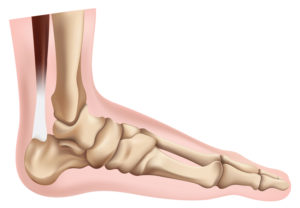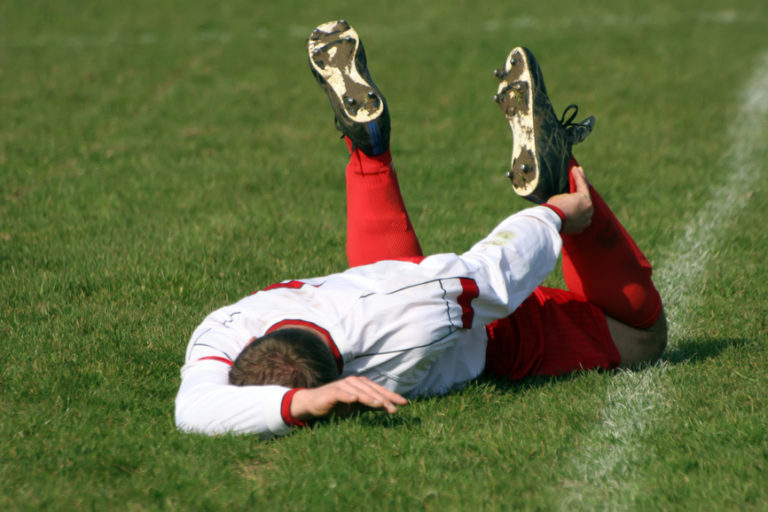One of the most common sports related injuries are achilles tendon ruptures. The achilles tendon is the largest tendon in the body, connecting the calf muscle to your heel bone. This tendon helps you point your foot downward and rise on and off your toes as you walk.
What is the Achilles?

It is composed of strong, fibrous tissues that can withstand great amounts of stress. Those likely affected by this injury are athletes, although uncommon traumas including stepping into a hole and falling from great heights can cause a rupture, too. Other risk factors for this injury include age (peak injury age is 30-40), gender (males are 5x more likely to experience this injury) , steroid injections (injectable steroids can weaken the surrounding tendons, causing more susceptibility for rupture), and consumption of Fluoroquinolone antibiotics.
When you rupture the achilles tendon you are likely to feel a snap or pop, followed by an immediate sharp pain.

You are also likely to experience these symptoms:
- Swelling near the heel
- Inability to ambulate properly
- Inability to bend the foot or “push-off” when walking
- Inability to stand on your toes on the injured leg
What should you do if you have these symptoms? – Call your doctor!
Testing, Diagnosis, and Treatment Options:
If there is a question regarding the extent of your injury following your Doctor’s visit, an MRI scan will likely be ordered to confirm a complete or partially ruptured tendon. There are fairly equal operative and non-operative treatments available.

Surgery to repair the achilles consists of a small incision to the back of the lower leg. The surgeon will then reattach the tendon, sometimes reinforcing it with other tendons. Following surgery, there is an extensive period (approximately 4-6 months) of physical rehabilitation to strengthen the tendon and foot.
Non-Operative treatments include wearing a CAM walking boot with wedges to elevate the heel and casting. Physical rehabilitation is also highly recommended to increase strength and stability in the tendon. This method avoids the basic risks of surgery, though the likelihood of a re-rupture may be higher resulting in a longer and more difficult recovery.
If you suspect that you have a torn achilles tendon, contact our office to schedule an appointment with our foot and ankle specialist, Dr. John Bleazard, DO.
By: Megan Hefner, MS
Sources:
http://orthoinfo.aaos.org/topic.cfm?topic=av0003
http://www.mayoclinic.org/diseases-conditions/achilles-tendon-rupture
